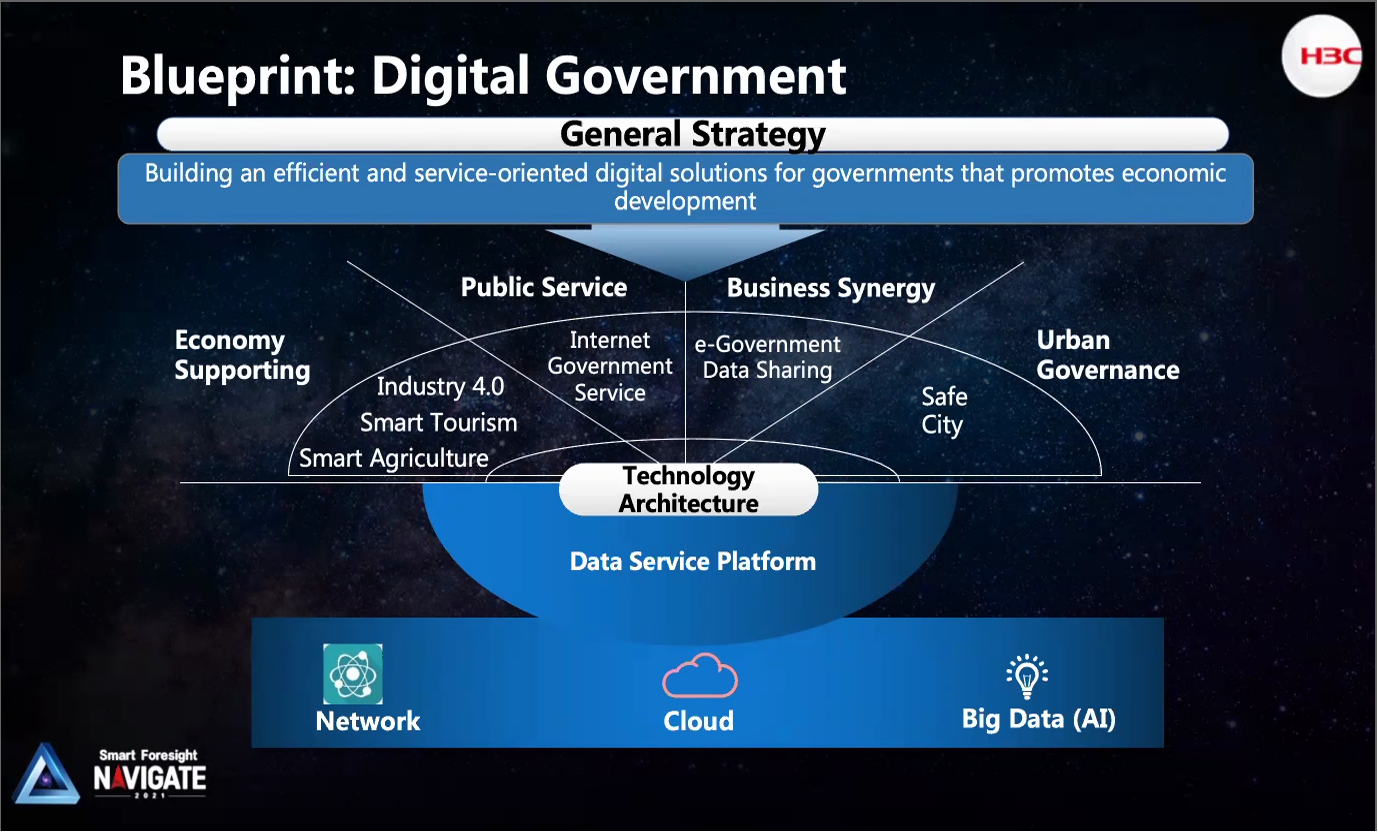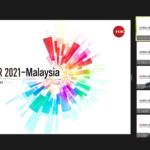
Launched on 19 February 2021 by the Prime Minister, YAB Tan Sri Dato’ Haji Muhyiddin Bin Haji Mohd Yassin, the MyDigital action plan sets the direction of digital economy and builds the foundation to drive digitalisation across the nation and outlines the efforts and initiatives which will be implemented up to 2030.
Published by the Economic Planning Unit, Prime Minister’s Department, MyDigital’s three objectives are to:-
- Encourage industry players to become creators, users and adopters of innovative business models.
- Harness human capital to thrive in the digital economy.
- Nurture an integrated ecosystem that allows society to embrace digital economy.
Its six strategic thrusts are to:-
- Drive digital transformation in the public sector.
- Boost economic competitiveness through digitalisation.
- Build and enabling digital infrastructure.
- Build agile and competent digital talent.
- Create an inclusive digital society.
- Build trusted, secure and ethical digital environment.
The implementation of MyDigital is divided into three phases:-
- Phase 1 starts from 2021 to 2022 and will strengthen the foundation of digital adoption.
- Phase 2 from 2023 to 2025 will drive inclusive digital transformation.
- Phase 3 from 2026 to 2030 will make Malaysia a digital content and cyber security leader in the regional market.
“This also is H3C’s vision,”said Ma. “We are shaping a better life for the future based upon digitalisation. Besides the Malaysian government’s initiative, governments and organisations around the world have embraced digitalisation as very important as a whole,” Ma added.
According to industry analyst IDC, digitalisation will reshape business by 2022 and 60% or more of business opportunity will be driven by digitalisation, whilst McKinsey expects digitalisation to create up to 45% of total industry revenue by 2030.
“It will reshape industrial environments, recreate business models, reinvent customer relationships and redefine operating modes,” said Ma.
More particularly, MyDigital’s objectives are to:-
- Create 500,000 new jobs, provide 100% of households with Internet access and to enable all students to have access to online learning.
- Raise business productivity across all sectors by 30% by 2030, for the digital economy to contribute 22.6% of GDP, and for 875,000 small-to-medium enterprises to adopt e-commerce.
- To attract at least two unicorns, whether domestic or foreign, RM70 billion investment in digitalisation and to increase the number of startups to 5,000.
- For 100% of civil servants to be digitally literate with 80% of government services to be online end-to-end, for all government ministries and agencies to provide cashless payment options by 2022, and to achieve 80% use of cloud storage across the government in 2022.
“All these high-level high-level objectives require strong digital solutions partners to advise and bring solutions to customers and H3C’s position in Malaysia is to offer end-to-end solutions and we have a complete product portfolio, including switches, routers, Wi-Fi, hyperconverged computing, storage and our own cloud solutions,” said Ma.
H3C Malaysia’s plans are to:-
- Leverage on its various solutions to support MyDigital objectives, as well as other plans for for digital innovation and implementation.
- Work with domestic ICT industry channel partners to deliver its technology and digital solutions as a whole.
- Encourage Malaysian businesses to deploy the right digitalisation technology with the best practices to drive the domestic economy.
Founded in China in November 2003, H3C has implemented business innovation and digital transformation solutions for the government, education, power & energy, telecommunication companies & carriers, transportation, large-scale enterprises, finance, Internet and medical care industries in China.
Its full portfolio of digital infrastructure products span across compute, storage, fixed and wireless networking, 5G, security and related domains, and provide a comprehensive one-stop digital platform that includes cloud computing, big data, artificial intelligence (AI), industrial internet, information security, intelligent connectivity, new safety, and edge computing, as well as end-to-end technical services.
H3C also is the exclusive provider of HPE® enterprise servers, storage and associated technical services in China.
H3C Malaysia was established in 2019, with an office and spare parts centre in Kuala Lumpur and the company offers its technologies, innovations, experience, successes and best practices to help Malaysia realise the MyDigital objectives.
The company also works through independent software vendors and channel partners in Malaysia and provides training and certification of their technicians and engineers.
“In education, we have supplied our SDN (software-defined network) infrastructure to most universities so students can seamlessly access the network, subjects and learning facilities within the campus 24 x 7,” said Ma. “We also supply the university campus cloud together with applications running on top,” Ma added.
For example, H3C supplied the Guangzhou International Campus of South China University of Technology (SCUT) with an efficient and reliable SDN campus network to accelerate the implementation of smart education and promote the innovation of education models, campus life and management methods.
The installation comprised more than 7,000 devices, including SDN campus network, intelligent network, wireless IoT and SDN data centre and so forth, as well as the flexible access authentication mechanism for the campus.
H3C successfully logically integrated three physical campuses into one campus so that different businesses could be flexibly customised according to their needs, and it put new smart campus applications, such as virtual campus cards and green energy consumption reduction, under uniform management throughout the university.
In the “block-style” SCUT campus, teachers and students can enjoy the same quality of wireless network services no matter where they are on campus after accessing the wireless network. For network managers on campus, they can also flexibly customize the campus network management mode to realise the automatic launching and deployment of business.
This gave the campus a new network architecture with a dense deployment of IoT nodes and communication nodes, as well as a powerful data centre, which enabled the campus to process IoT data, campus network data, business system data and data from scientific research and teaching activities.
SCUT’s central monitoring platform can collect, store, analyse and learn from the data of 18 specialised systems to form a comprehensive school dataset. Through data association analysis and the collaboration of various systems, complex applications such as security interconnectivity, emergency response, green energy consumption reduction, the comprehensive evaluation of teachers and students, and personalised guidance for students, thus achieving the intelligent, data-driven evolution of campus services.
H3C’s products involved include its switches, its Application-Driven Networking (AD-NET) solution which leverages SDN with Virtual Extensible LAN (VXLAN) network visualisation technology, artificial intelligence (AI), big data, and cloud, AD-NET solution converge Application-Driven Data Centre (AD-DC), Application-Driven WAN (AD-WAN), and Application-Driven Campus (AD-Campus) into a unified architecture, making cross-domain communication, operation and maintenance much easier and more convenient.
Other products and solutions deployed include H3C’s technical solutions such as intelligent connectivity, cloud computing and information security, and industry solutions such as education.
SCUT’s campus network empowers world-class talent training through smart education to help China to create a brighter future.
H3C’s other educational solutions include the installation of a campus cloud at Tsinghua University, and AD-Campus solution at one of China’s most famous universities with a total of 15,841 full-time students including 11,270 undergraduates and 4,386 postgraduates, a new campus network at Shandong University’s Qingdao Campus, which was built to accommodate over 10,000 students and 2,000 teachers who required a high-availability, broad-functionality architecture, offering rapid provisioning of all devices and the flexibility to provide on-demand services for departments, teachers and students. Altogether H3C says it has supplied its campus cloud solutions to over 200 of China’s 2,300 universities and to 600 education bureaus.
H3C also provided its network infrastructure and AI technology to automate government offices and its government cloud solution to automate most of government departments’ internal operations. At the same time, H3C also supports government cloud projects and provides government cloud technology to government departments to to run their applications on top of it.
In medical care, H3C provides cloud solutions which can run on different hospital information systems.
Beside the above, H3C also provides solutions to the power & energy, telecommunications & carrier, transportation, large scale enterprises, finance and Internet industries.
Closer to home
Given its vast experience in China and its wide portfolio of equipment, systems and solutions, H3C is confident that it can help Malaysia implement digitalisation in the healthcare sector.
The company can also help Malaysia implement e-government all the way up to smart cities, smart government, a modern government system and ecosystem with an interconnected cloud, AI and big data, with government applications running on top of the infrastructure, all based upon H3C’s best practices in government digitalisation.
“Service convergence and platform integration play a key role in government transformation,” said Ma.
Air Selangor
“H3C supplied its AD-Campus SDN solution to SYABAS (now known as Air Selangor) which allows SYABAS to set up and enforce automated access and consistent security policies across the network easily”, said Ma. “AD-Campus SDN is easy to implement and its deployment configuration was reduced to two weeks”, he added.
Now, a Selangor state government owned water utility, Air Selangor manages, operates and distribute quality clean water for over 10 million customers in Selangor state and the Kuala Lumpur and Putrajaya Federal Territories.
According to an H3C press release dated 17 July 2020 which did not name the water utility, the biggest problem that the office network of a water utility which supplied customers across Selangor, Kuala Lumpur and Putrajaya had a rigid infrastructure and complex operation & maintenance, which made it difficult provide plug-and-play functionality and consistent superior experience.
This utility also required automation and convergence to display all network situations without too much manual configuration, whilst for IT administrators, the network was difficult to guarantee high availability. It also wanted a new network which is compatible with their existing devices to protect their investment.
So based on analysis of user numbers, customer requirements, network bandwidth and other metrics, H3C offered its customised AD-Campus SDN network solution, comprised of three stacking leaf switches deployed separately in three different buildings.
Each group links to multiple stacking access switches deployed in different floors which are used for terminals and access points. Main and backup servers are in building 1 and 2 respectively, which run AD-Campus controller and other software. With the help of H3C’s and 3rd party firewalls and load balance, server farm and internet will be easy and secure to access.

The benefits of the new network are:-
- Automation: Network deployment, service provisioning, network expansion and fault device replacement are all automatically implemented by controller with several clicks, which considerably reduce the complexity and save workload while improving efficiency.
- Consistent Experience: All the officers in three different places can roam seamlessly with same policy and authority. Even there are department adjustment or officer station movement, it doesn’t have to reassign IP address and segment as before.
- Compatibility: AD-Campus solution is compatible with 3rd party wireless network and LDAP server, firewall and load balance to give huge saving on investment. Related wireless network, authentication and security policy are running well with the network.
- High Availability: Cold standby, failure bypass and DHCP failover are used in the network to give entire assurance of reliability. When there is failure connecting to authentication server, it is able to lead new access users to critical VxLAN with limited authority to make the network still available.
Meanwhile in a press release dated 25 January 2021, Air Selangor announced that it in 2020, it had has successfully achieved a lower average rate of the Non-Revenue Water (NRW) to 28.6% from 29.7% in 2019, through a strategic planning and implementation of several initiatives, especially the in-house initiatives which began in 2017.
This success was achieved by Air Selangor’s Leak Specialist (LS) and Leak Inspector (LI) teams who detected more than 90,000 leaking pipes, as well as through the implementation of Active Leakage Control Programme, District Meter Zones Establishment Programme, and Old Pipe Replacement Programme. The implementation of these programmes have reduced burst pipe incidents by 51%, from 5,398 cases in 2017 to 2,620 cases in 2020.
As a result, Air Selangor recorded a Pipe Burst Index (PBI) of 8 burst pipe cases per 100 km, compared to the international PBI benchmark of 13 burst pipe cases per 100 km per year.
Besides that, Air Selangor also installed a total of 1,650 transient pressure sensors on the main pipes to detect leaks much earlier which allows repair work to be carried out immediately. At the same time, the transient pressure can prevent the main pipes from bursting, which could cause water supply disruption to consumers.
The use of Permanent Leak Noise Correlating Logger that is capable of detecting leaks in the reticulation pipe system at all times, 24 hours a day. This online monitoring system allows immediate corrective action to be taken after the data indicates a leak in the pipe. As of the end of 2020, a total of 1,640 permanent leak detectors had been installed in 36 District Metering Zones.
In a press release of 3 February 2021, Air Selangor said that to ensure that it is on the right track to reduce the NRW rate in 2021 by 0.5%, the utility would continue with its strategic and rigorous planning as and will continue to implement its in-house initiatives begun in 2017.
It also formulated a Key Performance Indicator (KPI) that will be implemented to ensure that the reduction of the NRW 2021 rate can be achieved which include:
- Air Selangor’s Leak Specialist Team and Leak Inspector Air Selangor to detect at least 78,000 cases of leaking pipes within the distribution pipeline network in the Active Leakage Control Programme.
- To establish a total of 75 District Metering Zones (DMZ) in the Regional Metering Zone Establishment Programme.
- To replace old and critical pipes, especially the asbestos cement type of 150 kilometres through the Old Pipe Replacement Programme.
- To continue the installation of sensors on the main pipes, with an estimate of 1,780 sensors to detect transient pressure and leakage at an early stage.
- Usage of 3,000 Permanent Leak Noise Correlating Logger on reticulation pipes in 60 District Metering Zones.
Air Selangor is committed to further reduce the NRW rate to 25% in 2025 and 15% by 2049.
Also, the utility hopes that the public can immediately report incidents of leaking and broken pipes, illegal pipe connections and meters manipulation by irresponsible people through its call centre, its official social media channels and its website.
So far, H3C’s AD-Campus SDN solution enables ease of connectivity and ease of configuration across Air Selangor’s three buildings in the network. However, can H3C also include Air Selangor’s sensors, loggers and meters in its water distribution network into a single, integrated, intelligent whole?
“Yes we can,”said Ma.
In our next article, we will cover H3C’s new Cloud and AI-Native strategy, as well as its updated Digital Brain 2021 which will assist its partners worldwide to empower their digital transformation, as well as other new features and equipment announced at its global H3C Navigate 2021 event on 9 April 2021.








